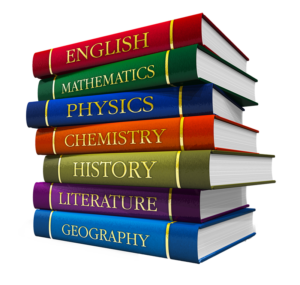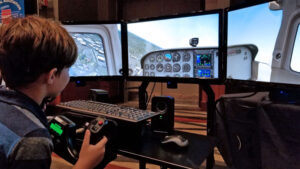 Can you still remember the 3 R’s from your schoolyard days (reading, ‘riting, and ‘rithmetic)? Of course! Even if it’s been a while since someone mentioned them to you, how could you forget? Our children and grandchildren in school these days are learning a new set of letters: STEM. STEM stands for Science, Technology, Engineering, and Mathematics, and it comprises the backbone of our information-based, high-tech society. Of course the 3 R’s will always be important, but STEM has already proven itself to be a vital component of the education of the next generation of innovators and leaders.
Can you still remember the 3 R’s from your schoolyard days (reading, ‘riting, and ‘rithmetic)? Of course! Even if it’s been a while since someone mentioned them to you, how could you forget? Our children and grandchildren in school these days are learning a new set of letters: STEM. STEM stands for Science, Technology, Engineering, and Mathematics, and it comprises the backbone of our information-based, high-tech society. Of course the 3 R’s will always be important, but STEM has already proven itself to be a vital component of the education of the next generation of innovators and leaders.
Other than subject matter, what makes STEM education stand out? Unlike traditional education, which focuses on subject areas independently, STEM education integrates subjects and provides opportunities for students to experience them firsthand. According to the National Science Foundation, studies show that activities applying real-life science, technology, engineering, and math help students excel in other subjects and demonstrate direct ways they can benefit society. Compared to a traditional education, STEM education provides students with a much clearer vision of potential careers.
Learn about STEM, see how aviation can help enhance traditional education, discover the tremendous opportunities in aviation, and find resources to help educators implement successful STEM aviation programs in the video below.

The ideas that define engineering and technology are broad and a bit hard to grasp, but if we focus on applying those subjects to aviation, they become easier to understand. Engineering applies math and science to facilitate the construction of aircraft and the engines that power them. Technology, or more specifically, computer science and programming, allows us to take all our knowledge of science, engineering, and mathematics and amplify it. One of the obvious benefits that technology offers aviation is speed. Computers can process data and perform complex calculations in fractions of a second. The other major benefit is that computers reduce human error. You’ll be glad your avionics don’t get panicked or disoriented in thick cloud cover, heavy rain, or turbulence.
Mathematics is effectively the string that ties science, technology, and engineering together. Our understanding of probability and space is what allows us to transform the information our instruments detect into reliable predictions and applications for real scenarios in the sky. And as one STEM field advances, new accomplishments become possible in the other fields. Using current computer technology, we can see the effects of a change in materials, atmospheric conditions, and steering without ever taking a real plane off the runway.

Advances in desktop flight simulation software allow enthusiasts and students alike to practice flying in their home offices. Students can apply knowledge gained in the classroom in a safe, controlled environment, reducing risk and costs associated with learning to fly. For example, the Gleim X-Plane Flight Training Course integrates flight lessons from the FAA-approved Gleim pilot training syllabus with the ultra-realistic X-Plane flight simulator to develop remarkable proficiency. Flight schools, colleges and universities, and schools with STEM programs can use the Gleim Virtual Cockpit™ simulator as a training aid to enhance their curriculum, saving students time and money while creating safe, competent pilots.
Aviation is just one area that has made amazing strides thanks to the many advances in science, technology, engineering, and mathematics. Other STEM fields, like health and medicine, energy, national security, robotics, and sustainability, have also been advancing rapidly. Most of the things we take for granted in our daily lives are a result of STEM-related innovations. It’s hard to imagine life without the luxury and convenience STEM has afforded us, so it is important to encourage students to participate in these fields to make new breakthroughs possible and ensure there’s a bright future to look forward to.
Gleim Aviation is committed to supporting STEM education. Resources are available for educators to master aviation through professional development and outfit their classroom with aviation training materials. For information about how Gleim can help you launch a STEM aviation curriculum in your local school or community, visit the Gleim STEM Resource Hub or call an Aviation Training Consultant at 800-874-5346 ext. 471.
Written by Austin Scott, Marketing Assistant for Gleim Aviation


